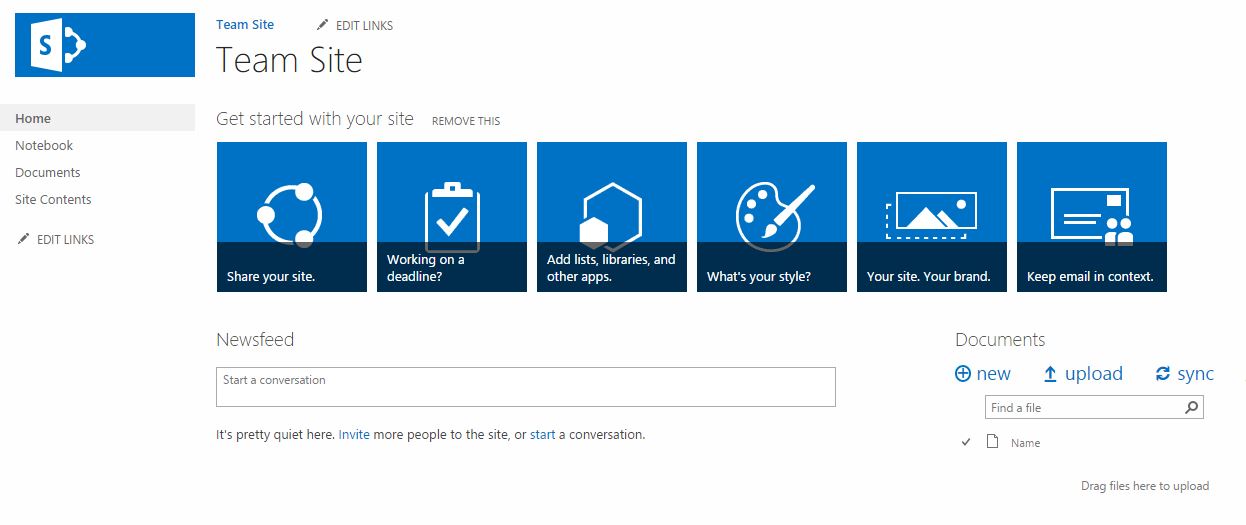3 Don’ts of SharePoint Implementation
I decided to write this article out of frustration. The frustration from a trend that I observe when organizations sign up for Office 365 and start utilizing it for team sites and document sharing without doing any planning upfront. This applies to all kinds of organizations, from small business to large enterprises and nonprofits.
Here is an example: Your organization signed up for Office 365, migrated email to the cloud and now ready to take next big step which is – SharePoint Implementation for collaboration in your organization. So far, so good. And what happens next?
Well, you made it to SharePoint homepage, which looks like this

Looks wonderful, doesn’t it? And the problem is – these sites are rolled out to the users as-is. Those weird icons in the middle of the screen and links on left hand-side can only spell one thing:
Your SharePoint implementation failed the minute you rolled this site out to your users
Let me clarify: You failed from SharePoint best practices (etiquette) standpoint, like SharePoint usability and user adoption. This is the equivalent of inviting a woman for date and taking her to Burger King for dinner. It is very unlikely you will ever get a second date (unless the woman is a fast food junkie). Same with SharePoint. You only have a chance to make first impression to your users once! That’s why I decided to put some tips together for things organizations need to keep in mind when successful SharePoint Implementation is desired.
1. Don’t roll out “Out of the Box” SharePoint site using built-in SharePoint templates
This is #1 mistake companies make. SharePoint template sites are not meant to be one size fits all. We customize everything in our world today according to our specifications. You can get a laptop with custom processor speed, storage and screen quality – just the way you like it. You can get a latte or cappuccino with desired amount of sugar, milk and type of coffee at your favorite coffee shop. Same applies to SharePoint. Use the minimum number of web parts that you need, customize metadata to your needs and line of business, cleanup quick launch navigation and remove all the links you don’t need. Make a solid first impression on your users.
2. Don’t allow users to use OneDrive for “team collaboration”

3. Don’t roll out any team or project sites until you address Training, User Adoption and Governance
These soft success factors will make or break your SharePoint implementation
I have written a number of posts on these topics before and many organizations tend to ignore or bypass these altogether. Your employees need training, no matter how “techie” they are or how well you think about them. Life is too complicated these days with information overload, you don’t want to make it harder for your employees by creating complicated and hard to navigate SharePoint sites. Simplicity is key (think Apple devices and their success). You need to constantly communicate with your employees, solicit their feedback, be available for training when required. At the end of the day – they are the day-in/day out users – empower them by listening to them and their requirements. Here are links to posts I published previously:
10 reasons why SharePoint training matters
10 Practical Tips to Boost SharePoint User Adoption
